by F.B. Peairs * (12/14)
Quick Facts…
- Four species of mites attack wheat in Colorado.
- The wheat curl mite eggs, immature stages and adults are found in the winter on wheat and nearby perennial grasses.
- Brown wheat mite summers in the soil as a white egg. In the fall, eggs hatch after a 10-day incubation.
- Banks grass mites produce heavy webbing to protect colonies of eggs and adults.
- Favored hosts of the winter grain mite include small grains and grasses.
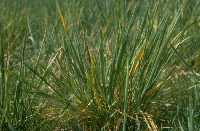
Figure 1: Wheat plant affected by wheat streak mosaic. Photograph by R. Hammon. |
Four species of mites attack wheat in Colorado:
- The wheat curl mite, Aceria tosichella, is a microscopic eriophyid mite of great economic significance in Colorado. It vectors the causal agents of wheat streak mosaic (Figure 1) and high plains disease.
- The brown wheat mite, Petrobia latens, and Banks grass mite, Oligonychus pratensis, are spider mites that occasionally cause economic damage to winter wheat in Colorado. Brown wheat mite infestations normally are associated with dry spring weather and usually disappear with significant precipitation.
- Banks grass mite becomes a pest of young wheat when it moves off maturing corn in the fall, and less commonly in the late spring during droughty periods.
- Winter grain mite, Penthaleus major, also damages wheat, but is rare in Colorado.
Wheat Curl Mite
Field Biology. Eggs, immature stages and adult wheat curl mites (Figure 2) are found in the winter on wheat and other nearby perennial grasses. As temperatures rise in the spring, mite populations develop under leaf sheaths, inside newly emerged leaves, and eventually on green tissues in the head. Eggs are placed along leaf veins. An average complete generation requires eight to 10 days. Most mites are found on the upper surface of the youngest fully expanded leaf, adjacent to the ligule. They seem to prefer the most tender leaf tissue and therefore move to each new leaf as it emerges. Leaf curling occurs as a tight roll of the leaf margin, in contrast to the looser roll of the entire leaf caused by Russian wheat aphid.
As the wheat plant dries down, the wheat curl mites congregate on green tissue in the upper parts of the plants where they are picked up by wind currents and carried to their oversummering grass hosts. As summer hosts start to dry down, the reverse process occurs, and mites are carried by winds to newly emerged winter wheat.
Host Plants. The wheat curl mite attacks a wide variety of grasses, mostly in the Agropyron, Alamos, Hilary, Hordeum, Lolium, Muhlenbergia, Poa, Stipa, Triticum and Zea genera. Corn, volunteer wheat and summer grassy weeds such as barnyard grass, stinkgrass, witchgrass and green foxtail, are important oversummering hosts in Colorado.
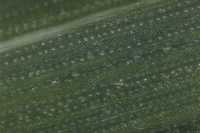
Figure 2: Wheat curl mites in veins of wheat leaf. |
Distribution. This mite is known to be widely distributed in Europe and North America, including the wheat-producing areas of Colorado. It is likely found in most wheat-producing areas of the world, since wheat streak mosaic occurs in these areas.
Scouting and Treatment. The only effective and economical controls for wheat curl mite are preventive, so scouting is not needed. Use preventive controls in high risk areas where wheat was damaged by hail after heading or where wheat will emerge before adjacent corn dries down.
Destruction of volunteer wheat and the maintenance of a two-week volunteer-free period prior to planting winter wheat in the fall are the most effective management practices for this mite and the virus diseases that it vectors. Some effective varietal resistance is available.
Control of wheat curl mites with foliar acaricides has not been shown to be effective.
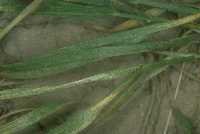
Figure 3: Wheat plant damaged by brown wheat mite. Mites can be seen on leaves. |

Figure 4: Red brown wheat mite eggs, indicative of active population. |
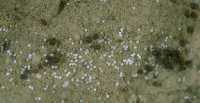
Figure 5: White brown wheat mite eggs, indicative of population going into summer period of inactivity. |
Brown Wheat Mite
Field Biology. Brown wheat mite (Figure 3) spends the summer in the soil as a white egg resistant to hot, dry conditions. In the fall, as cooler, wetter conditions return, these eggs start to develop and hatch after a 10-day incubation. Female mites mature after feeding on wheat for about two weeks and then lay round, red eggs (Figure 4) that give rise to further fall (one or two) and spring (two or three) generations. Males have not been observed in this species. As summer conditions return, white oversummering eggs are produced. Both red and white eggs are placed on soil particles adjacent to wheat plants (Figure 5).
Brown wheat mites feed on plant sap during the day and spend the night in the soil. Their activity peaks at about midafternoon on warm, calm days (the best time to scout). This mite is not affected by cold temperatures, but populations are quickly reduced by driving rains of 1/3 inch or more.
Host Plants. Damage from brown wheat mite has been reported from a wide variety of cultivated plants, including sorghum, onions, fruit trees, carrots, cotton, lettuce, iris, alfalfa and clover. In Colorado, this mite is considered to be a pest primarily of drought-stressed winter wheat and Kentucky bluegrass turf.
Distribution. Brown wheat mite is a pest of small grains in most small grain-producing areas of the world. In Colorado, it is most common on drought-stressed winter wheat on the eastern plains.
Scouting and Treatment. Management of volunteer wheat is an important preventive measure for brown wheat mite, as it is with several winter wheat pests. Any management practices that serve to minimize drought stress are also important. Once an outbreak occurs, however, chemical control is the only effective management.
The economic threshold for this pest is not well defined, but it is at least several hundred mites per row-foot in the early spring. This figure will increase with lower wheat prices and decrease with higher wheat prices. It often is difficult to justify a chemical treatment, since brown wheat mite infestations are associated with drought stress. If a driving rain of at least 1/3 inch occurs,
mite levels will be significantly reduced regardless of chemical treatment. If it does not rain, crop yield may be so reduced by drought as to make chemical treatment uneconomical. Also, if white eggs are present and red eggs are mostly hatched, the population is in natural decline and treatment is not economically justifiable.
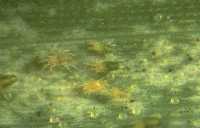
Figure 6: Banks grass mite female and eggs. |
Banks Grass Mite
Field Biology. Fertilized female Banks grass mites move into winter wheat in the fall as their summer hosts, primarily field corn, begin to dry down. Overwintering mites are bright orange. With the onset of winter conditions, the mites move to the crowns of wheat plants, where they feed until spring. Small, pearly white eggs then are laid that mature into pale to bright green male and female adults. Mites breed continuously on wheat and summer hosts until their return to winter wheat in the following fall. The time required to complete a generation varies with temperature and is usually 10 to 20 days.
Banks grass mites produce heavy webbing to protect colonies consisting of eggs, immatures and adults (Figure 6). Colonies usually are found on the undersides of leaves. Damaged leaves first become yellow, then brown and necrotic. Heavy populations can kill small plants and reduce kernel size in larger plants.
Host Plants. Banks grass mite attacks a wide variety of grasses. In Colorado, it is considered to be a serious pest of corn and an occasional pest of turf, sorghum and wheat.
Distribution. Banks grass mite has been found damaging grasses in many parts of the Americas and Africa. It is found throughout the grain-growing areas of Colorado.
Scouting and Treatment. Banks grass mite most commonly damages Colorado winter wheat in the fall in areas near maturing field corn. insecticide applications to field margins bordering corn often are sufficient to prevent economic damage. Spring infestations are not common in the state. Information on miticides registered for use against brown wheat mite can be found in the High Plains Integrated Pest Management Guide.
Winter Grain Mite
Field Biology. Winter grain mite has two generations per year. The first begins in the fall as the oversummering eggs hatch after rains provide adequate moisture. Feeding peaks in December or January. Second generation feeding peaks in March or April. Populations decrease and oversummering eggs are produced as temperatures become unfavorably warm.
Chemical Control of Mites in Wheat
|
Newly-hatched mites feed on leaf sheaths and tender shoots near the ground. Older immatures and adults feed higher up on the plants at night and on cloudy or cool days. They move to the soil surface and into the soil to seek moisture and to avoid warm temperatures. Winter grain mite activity is greatest between 40 and 70 degrees F. On hot, dry days, it may be necessary to dig 4 to 5 inches into the soil to find the mites. The mites are not harmed by high humidity, rainfall, short periods of sleet or ice cover, or by ground frozen to a depth of several inches.
Host Plants. Favored hosts include small grains and grasses. Winter grain mite also has been reported to damage legumes, vegetables, ornamental flowers, cotton, peanut and various weeds.
Distribution. Winter grain mite is found in temperate areas throughout the world. Since it has higher moisture requirements than other mite pests of winter wheat, this mite is rarely a pest under Colorado growing conditions.
Scouting and Treatment. Scout for winter grain mite early in the morning or during cool, cloudy weather when this mite is most likely to be visible. Check for mites under crust and clods on the surface of moist soil under wheat plants. Under hot, dry conditions, scout several inches under the soil.
Little is known about winter grain mite management. Infestations probably should exceed several mites per plant before chemical treatment is considered. Crop rotation is important.
Key to Mites Attack
- Leaves with tightly rolled edges. Plants with chlorotic speckles or streaks, often stunted (symptoms of Wheat Streak Mosaic) (Figure 1). Tiny, wormlike mites, visible with aid of hand lens (at least 10X), present on leaves. Often found in spaces between veins (Figure 2). Wheat curl mite.
- Leaves finely mottled and may have chlorotic tips (Figure 3). Heavily infested Crops have a droughty appearance, or a yellowish to bronzed discoloration. On warm, calm days brown mites with extremely long front legs (Figure 3) may be found on leaves, otherwise they can be found under soil or surface debris. Brown wheat mite.
- Leaves chlorotic, small plants may be killed. Damaged areas on larger plants may have a bright yellow appearance. Infested plants in the fall are often near drying corn. Small green mites (Figure 6) on leaves or in crowns. Produces noticeable amounts of webbing on undersides of leaves (brown wheat mite also may produce
small amounts of webbing). Banks grass mite. - Heavily infested Crops grayish or silvery. Plants may be stunted. Leaf tips appear scorched and entire leaves or plants can be killed. Absence of yellow mottling typical of spider mite feeding. A large dark brown to black mite, with reddish legs. A tan or orange spot is often visible on the back. Winter grain mite.
1 Colorado State University Extension entomologist and professor; bioagricultural sciences and pest management. 9/99. Revised 12/14.
Colorado State University, U.S. Department of Agriculture and Colorado counties cooperating. Extension programs are available to all without discrimination. No endorsement of products mentioned is intended nor is criticism implied of products not mentioned.
Go to top of this page.





